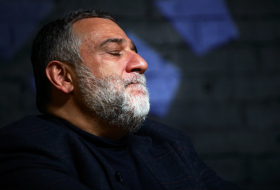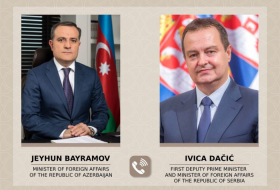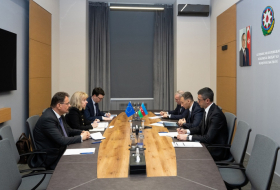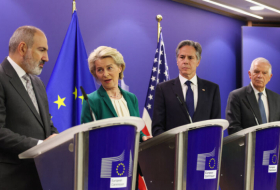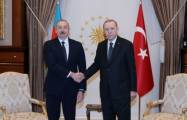Creative geniuses can be both a boon and a bane in the workplace, so getting the most of these extraordinary minds can be slippery for everyone involved.
If you were to run an advertising agency, would you hire Don Draper?
In the early series of US corporate drama Mad Men, the maverick creative frequently saves the day with his astonishing flashes of inspiration for original campaigns. Little wonder that he’s headhunted by other companies who want to benefit from the genius he has brought to his firm, Sterling Cooper.
As the plot progresses, however, it becomes clear that Draper (pictured above) is often a burden to his colleagues – and it’s not just his alcoholism and messy love life that annoys them. Draper frequently dominates meetings and leaves little opportunity for others to show their potential. Even his protégé, Peggy Olsen, leaves the company to escape from his shadow.
Mad Men is fiction, of course, but as psychologists have started to explore the dynamics of team creativity, they have confirmed that real-life creative geniuses can be both a boon and a bane in the workplace. And it often takes some clever management – both of the “stars” and the people around them – to make the most of their extraordinary minds.
Fallen stars
The recent research builds on counter-intuitive findings from various disciplines showing that teams often fail to make the most of individual talents.
Researchers have analysed the make-up of basketball and football teams, for example, to find out how the addition of highly-rated players improves overall team performance. When analysing the World Cup, for instance, they examined how many of each nation’s players came from the most prestigious clubs, such as Manchester United or FC Barcelona. Surprisingly, they found that the benefits of that exceptional individual talent were often underwhelming. Thanks, perhaps, to the star players’ rutting egos, the teams with the highest number of stars often failed to collaborate effectively.
The same breakdown of group dynamics can also be found in the highly competitive environment of Wall Street equity analysts, in which high-performing individuals are often singled out by journalists from the trade press. As you might expect, these people tend to be headhunted and often end up working for the same companies – but a study from 2011 found that employing a large number of these stars in a single team rarely brings the profits you might expect. In many cases, it seemed like the team, as a whole, may have done better if the leader had hired more mediocre talent.
Clearly, a group can be much greater or less than the sum of its parts, and individual geniuses, in particular, may sometimes struggle to gel with their workmates.
Creative collapse
None of this previous research looked specifically at creativity, however. This led Ning Li at the University of Iowa, US, to wonder how particularly creative team members – the real-world Don Drapers – would influence team dynamics.
Collaborating with colleagues in China, Li surveyed the Research and Development teams of 23 firms in multiple industries, including manufacturing, transport, hydropower and aerospace. In each case, the team leaders were asked to rate the creativity of the individual members. Li and his colleagues asked each member to describe their relationships with the other team members, including how often they relied on each other for input in their work. They also asked them about their learning on the job and whether they got the chance to practice new skills. Finally, Li asked leaders within the company to rate the team’s creativity, as a whole unit.
As Li had hypothesised, teams centred around particularly creative individuals faced some unique challenges. While the creative stars’ brilliant ideas certainly contributed to the team’s output, this came at a cost to their colleagues, who tended to find fewer opportunities to learn and develop their own talents. “The other people become less creative,” says Li, “and that mitigates the benefits provided by the star.”
One reason may be intimidation. “You don't want to contribute your ideas in front of a star co-worker because you don't want to make yourself look like a fool, or say something stupid,” says Li. It could also be a sense of dependency – you know that they’ll come up with something brilliant, so you don’t have to try so hard, he says.
Confirming these effects, Li also looked at data from a further 113 sales teams, whose jobs required very different kinds of creativity from the work of the R&D departments. “They need to invent different ways to attract customers,” says Li, whose results were published in 2020.
To identify the creative stars in this setting, leaders were asked to nominate up to 20% of their employees “who display superior creativity relative to others and have a reputation of being creative”. With further questionnaires exploring the team dynamics, Li found exactly the same patterns playing out, with the stars limiting the growth and performance of the people around them.
Li emphasises that the effects depend on the star’s position within the team: if the star’s input is central to all discussions, the downsides will be more obvious. But stars who are given greater independence tend to be less problematic since there is less opportunity for those feelings of intimidation or demotivation to arise among their colleagues.
Creative stars may represent unique problems for start-ups. Amrita Lahiri at Washington State University, US, recently analysed data from new ventures making “minimally invasive surgical devices” – a particularly competitive industry that requires constant innovation. She ranked the inventors within the industry according to the number of patents they filed, and the top 5% were deemed to be the stars.
As you might hope, the start-ups often benefited from hiring these high performers, provided that the founder of the company was not working as an inventor on the same team. Then, the team’s innovation often dropped significantly. Although the data didn’t offer specific details on the team dynamics, Lahiri found that this was most likely in teams without a formal hierarchy, which might have led the two high-status individuals to clash over the most important decisions.
Psychological safety
While these findings might seem to create a serious dilemma for managers, the researchers have some suggestions that might enable teams to make the most of their creative stars while also helping the other members flourish.
Firstly, managers should work on the culture, ensuring that each member feels psychological safety – the feeling that it is possible to express ideas and opinions freely, without the risk of censure. “That way, the negative team members are not intimidated by the star,” says Li.
In group meetings, it could also be useful to manage the order of people’s contributions. “If you have a really good employee who is full of ideas, ask that person to speak last,” says Li. This will stop the star from dominating the discussion before others have had a chance to contribute.
Lahiri, meanwhile, argues that it’s important to pre-empt the internal conflicts that she observed in her study of medical start-ups. For this reason, she advocates setting some firm ground rules. “Setting clear expectations about how decisions are made and how disagreements are resolved are essential to minimise disruptions,” she says.
These findings might also change our attitudes to recruitment. While it’s essential to consider a candidate’s track record, it’s equally important to think about ways the new starter might fit in with their colleagues, since the resulting group dynamics will be just as important as their individual talent. Many teams may be able to thrive perfectly well without a Don Draper.
BBC
More about:











